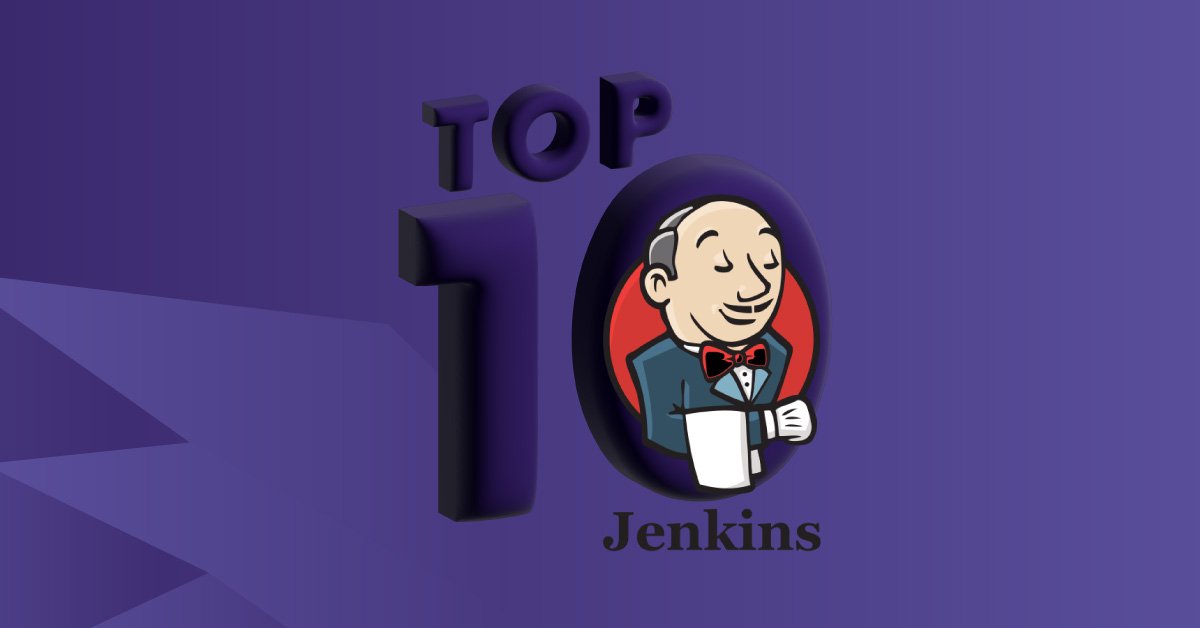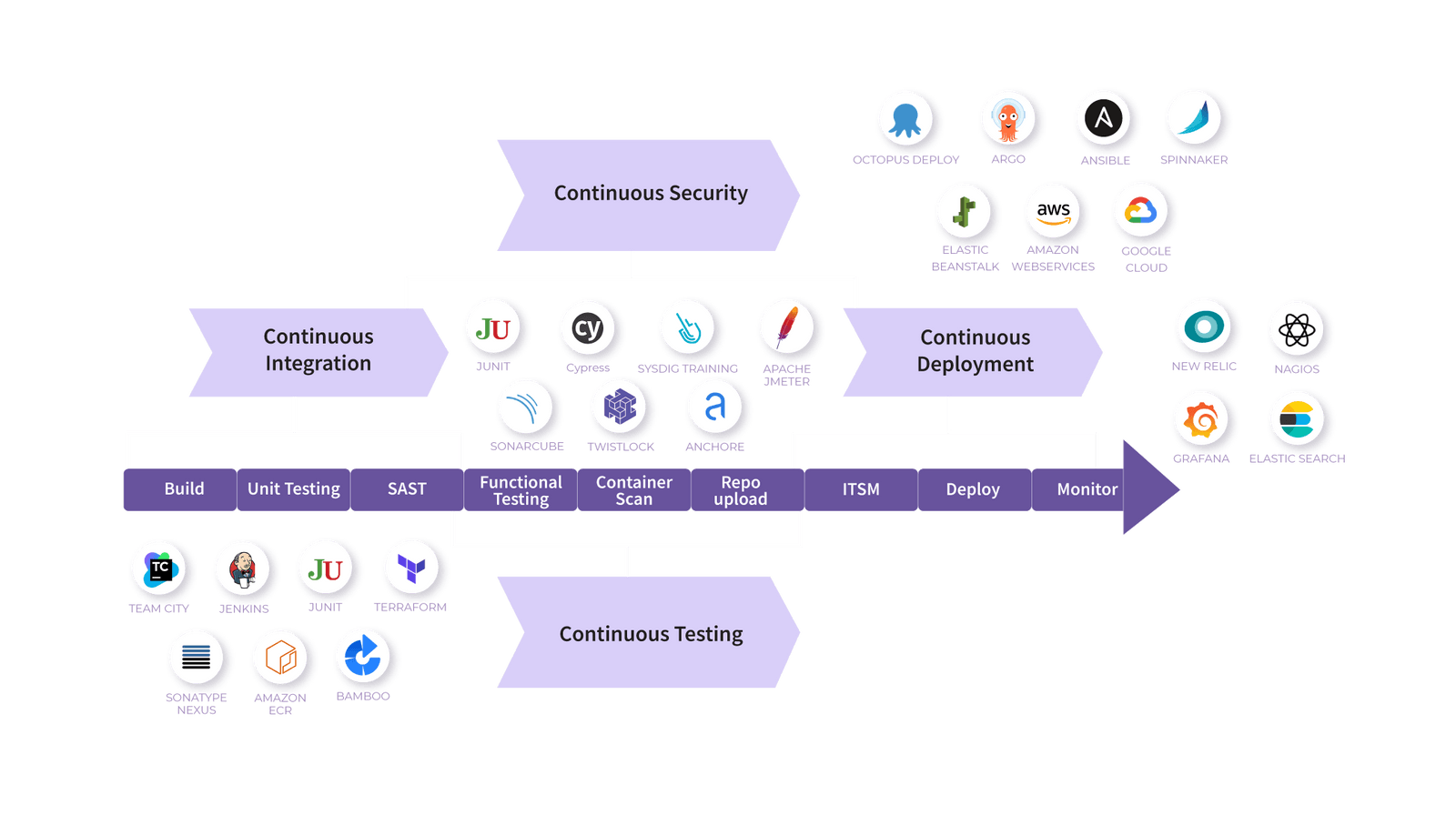In the present-day digital world, every company is a software business, irrespective of the industry it is in. End-users, clients, and employees demand updated software on a regular basis, besides the products you are creating.
So, irrespective of the industry your company is operating in, you must invest in improving the productivity of your dev teams. And DevOps is the best way to do so. And, of course, the most important element teams require for DevOps is a Continuous Integration/Continuous Delivery (CI/CD) pipeline. So, companies in all industries must adopt CI/CD pipeline to accelerate their software delivery and improve Return on Investment (ROI).
Let us now explore what the CI/CD pipeline is and the benefits it brings to businesses of all sorts:
What is CI/CD Pipeline?
In general, Continuous Integration (CI) and Continuous Delivery (CD) pave the way for a faster and more efficient approach to integrating the work of different team members into one cohesive product. In the context of software development methodologies like DevOps, CI/CD is a set of practices that help the application development teams to streamline the entire software development lifecycle (SDLC), from development and testing phases to delivery and deployment phases. This enables the teams to integrate and deliver new code changes more frequently and reliably. While CI approach continuously integrates code changes into a shared branch, the CD approach automates the release and rollout of the application after integration.
” CI/CD is like a choo-choo train for computer software. It is a system that involves all the train engineers, conductors, train cars, tracks, and controls working well together, to ensure the passengers, which are software-change, get to their destination safely and quickly. ” – Marc Hornbeek
Taken together, this set of practices is often referred to as CI/CD Pipeline. The key element of the CI/CD pipeline is the use of automation to deliver higher quality code, at a faster pace. As the code changes progress through the SDLC, automation is leveraged to identify dependencies and other issues early in the lifecycle, push changes to various environments, and deliver a new version of the application. The automated pipeline removes manual errors, facilitates standardized feedback loops, and enables fast iterations.
12 benefits your company can get out of an effective CI/CD pipeline
A CI/CD pipeline leverages the power of automation to significantly streamline code development and delivery. CI enables developers to do tasks like source code integration and version controlling more efficiently and push the code into production faster. On the other hand, CD automates tasks like software testing and deployment. Together, CI/CD is a powerful approach for modern software development and enables businesses to drive value.
CI/CD Pipeline offers wide range of benefits for businesses. Here are the top 12 reasons why you need to adopt CI/CD pipeline:
1) Deploy faster
A CI/CD pipeline is like a turbo engine when it comes to accelerating the code deployment pace and time-to-market of the final product. It enables you to ship code changes not just every week, but every day and even hourly. As testing is automated, the code is automatically deployed if it meets the predefined criteria. This enables you to release software to production several times at a rapid pace while keeping quality intact. Moreover, the automation the CI/CD pipeline brings to the software development lifecycle reduces manual labor and time required for creating and maintaining deployment scripts and tools.
2) Avoid outages
A successful CI/CD pipeline enables your DevOps teams to continuously integrate small batches of code instead of the entire application. This approach helps the developers to easily identify the anomalies and fix them. So, you can avoid significant outages and other key issues by flagging bugs and vulnerabilities before they make it to production and disrupt the entire application.
3) Improve visibility across development
Before the introduction of DevOps methodologies and CI/CD approaches in software development, the developers would easily know there was an issue with code, but they used to struggle to know where exactly the problem was happening. Now, the automated testing practices of the CI/CD pipeline improved the visibility across the software development lifecycle. Developers can easily spot and isolate code issues. This, in turn, significantly improved productivity.
4) Reduce costs of delivery
CI/CD pipeline reduces human intervention across the DevOps lifecycle by automating the handoffs, version controlling, source code management, deployment processes, and testing, among others. This significantly saves the time and money required to develop and deliver high-quality software. Moreover, with a successful CI/CD pipeline in play, the development teams aren’t plagued with endless ‘code fix’ requests, so they can keenly focus on the next projects, maximizing the overall ROI for the company.
5) Cut down on manual debugging
Code testing and debugging is arguably the most important aspect of software development. And testing is the prime reason the releases are delayed. The delayed releases not only impact the time-to-market, but they also affect the business from a cost, branding, and reputation perspective. Before DevOps and CI/CD, the software testing and debugging were conducted manually, a time-consuming process. But, with CI/CD pipeline, you can significantly cut down on manual testing and debugging, dramatically improving software delivery.
6) Enhance code quality
The prime reason that businesses across the world are proactively adopting DevOps methodology is high-code quality. And, of course, the most important process the teams require for DevOps is CI/CD. A CI/CD pipeline enables dev teams to integrate code into a shared repository in small batches. This facilitates them to conduct code testing simultaneously. With a common repository, the developers can share their build with the entire team, eliminating siloed working. Additionally, the collaborative work environment enables us to easily identify critical bugs, before code issues make it to production. Thus CI/CD pipeline improves code quality and helps deliver superior software.
7) Get feedback continuously
Timely feedback is the ultimate benefit of the CI/CD pipeline. The CI/CD pipeline incorporates automated testing across the software development phases to immediately trigger feedback when faults are identified. The feedback, along with user behavior data and the key performance metrics, helps glean insights into what works for your organization and how to make further improvements to the product.
8) Simplify rollback
Easy rollback is one of the key benefits offered by CI/CD. A CI/CD pipeline empowers development teams to fail fast and recover even faster. Simply put, the CI/CD pipeline enables your developers to easily push code into production and, if any issues arise, simply roll it back. This ultimate ability to roll back code saves time, resources, and expenses by helping teams to fix the problem code at a faster pace.
9) Enhance transparency and accountability
A robust CI/CD pipeline provides real-time transparency and visibility into the entire software development process, courtesy of continuous testing and feedback. The feedback reports and test results allow everyone in the team to track the project status and immediately understand the build failures, code integration problems, and architectural bottlenecks, among others. The project managers and stakeholders can easily check the project status and track accountability as needed.
10) Improve mean time to resolution (MTTR)
A CI/CD pipeline provides high visibility across the SDLC, enabling DevOps teams to identify code issues quickly and fix them at a faster pace. This ability to rapidly resolve the issues improves the key development metric, i.e., mean time to resolution (MTTR). The better the MTTR, the more productively the DevOps teams can work, and the faster software can be delivered. Simply put, the better the MTTR, the better the ROI.
11) Improve performance metrics
Before DevOps and CI/CD, application performance or monitoring metrics are often absent, so teams failed to understand how the code is working in the real world. With CI/CD pipeline, the teams can easily monitor the health, performance, and reliability of the application. This metrics data help in gleaning actionable insights to improve the product further.
12) Reduce backlog
A CI/CD pipeline gives the development team the time to work on the things they won’t be able to do with traditional approaches. They can now go back to fix older code and improve its quality and make it more efficient. This not only enables your developers to tackle the backlog but also addresses the non-critical defects. In this way, the non-critical issues are fixed before they become critical and make it to production.

How can developers leverage CI/CD for easy software delivery?
CI/CD pipeline enables software developers to build and deliver high-quality software through streamlined and automated software development lifecycle, including development, testing, delivery, and deployment phases. It gives the ability to confidently build, test, and deploy code into production across several domains and disciplines. A typical CI/CD pipeline encompasses a gamut of building blocks from source code to the production stage. Here are the elements a well-build CI/CD pipeline features:
1) Build Elements
Software development teams build source code and package it for deployment. There are many build tools available in the market that automate this phase of the CI/CD pipeline. As these tools are language-dependent, they need to be called and executed. For instance, if you use JAVA, you need to call Maven or Gradle to build a JAVA distribution. Moreover, you can run build-centric tests such as unit testing and dependency scanning in the build elements.
2) Infrastructure Elements
Previously, infrastructure is provisioned ahead of application deployment. Now, with the emergence of infrastructure-as-code (IAC), infrastructure is provisioned during the pipeline execution. So, the modern-day CI/CD pipelines are infrastructure-aware. A successful infrastructure provisioning paves the way for CI/CD pipeline execution.
3) Test Elements
Test elements in CI/CD pipeline come in many shapes and forms. In DevOps methodology, CI/CD pipelines facilitate the room for executing the tests’ quality gates. In addition to the build-centric tests, application-level tests such as integration tests, soak tests, load tests, and regression tests are facilitated by the CI/CD pipeline.
4) Release Elements
Release elements in your CI/CD pipeline help your DevOps teams to achieve continuous deployment. Whether you are doing rolling deployment, blue-green deployment, or canary deployment, the release elements in your CI/CD pipeline helps in the orchestration.
5) Validation Elements
Validation elements in your CI/CD pipeline help push code changes through the software development lifecycle, promote artifacts, and monitor deployments. The modern CI/CD pipelines monitor the DevOps pipeline and automatically decide if a progression or rollback should occur. The pipeline also has the ability to validate the health of the code to be – or has been – deployed.
Get to know the latest CI/CD trends.
Opsera’s no-code CI/CD solution can be leveraged by teams in all industries
By now it’s clear that a CI/CD pipeline is imperative for businesses to accelerate software delivery and improve ROI. However, building an effective CI/CD pipeline that helps you realize all the business benefits mentioned above can be challenging and complex. With Opsera, you don’t need to worry about this.
There is no easier way to build and maintain a flexible and high-quality CI/CD pipeline than Opsera’s no-code CI/CD solution. Build drag-and-drop declarative pipelines, with no manual or code-based integrations. You can easily build the perfect CI/CD workflow and automate all the pipelines for any language, service, Salesforce, or AI/ML model deployments. Clone, reuse, and templatize pipelines for scale.
Sign up for a demo to learn how Opsera can help you implement CI/CD pipeline with no code.



